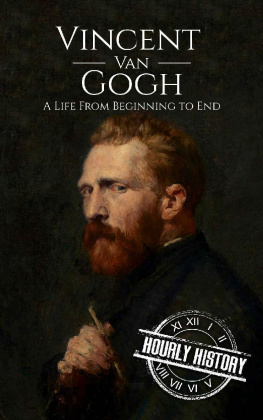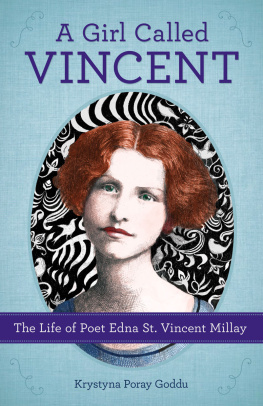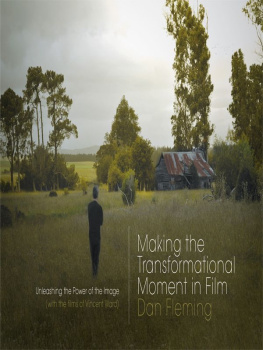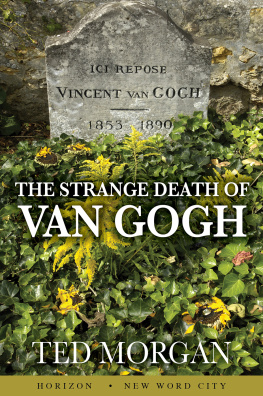I Like What I Know
A Visual Autobiography
Vincent Price
To Mary and Barrett
without whom I might not like what I know
as much.
Introduction by Victoria Price
My father fell in love with art when he was eight years old. It was a love affair that lasted his entire life. Ive come to believe that there are a fortunate few who know what they love early on in life, remember it even as they get older, remain devoted to it, and have the opportunity to fall in love with it over and over again throughout their lives. My father was one of those fortunate onesand I believe that this love affair contributed a great deal to the history of art in twentieth-century America.
I Like What I Know was published in the late 1950s, after my father appeared as an art expert on the hugely popular TV game show, The $64,000 Challenge. Playing against Billy Pearson as well as his dear friend and fellow art collector, Edward G. Robinson, my father not only shared his erudition and passion for art, but he used his TV time to promote regional museums across America. Following on the heels of the show, this book was a success, and helped to promote Vincent Price the movie actor as the art populist he was in his truest heart.
My dad genuinely believed that there should be original art in every home. Not long after the publication of this book, his dream became a reality when Sears Roebuck asked him to create the Vincent Price Art Collection, for which he bought tens of thousands of original works of artfrom Picassos to emerging artistsall of which customers could buy on their Sears charge account with a money back guarantee! In the ensuing years, my fathers fame as an art expert and advocate skyrocketed through his involvement with the Indian Arts and Crafts Board of the Department of the Interior, the White House Art Committee for both the Kennedys and Johnsons, as well as his syndicated art column that was published across America. But perhaps his most lasting legacy can still be found at the museum he and my mother founded in the late 1950s in East Los Angeles, the museum that now bears his name. The Vincent Price Art Museum has given tens of thousands of students and art lovers the opportunity to see and learn about art from all over the world as well as from their own neighborhood. It remains the most vital legacy of my dads belief that everyone should have access to the visual arts.
This book is the story of a boy who fell in love with art and then dedicated his life to learning more about it, spending more time with it, and making it possible for others to do the same. At one point, my father was the second most popular lecturer in the United States after Eleanor Roosevelt. What did he talk about? Art, of course. At the end of his life, my father and I sat on his bed and we talked about artour mutual passion and shared languagethree days a week for six months. We had already worked on a book of essays about art together. Looking back on those conversationsI realize that they were my fathers way of sharing his greatest legacy with me. The legacy of love. Quoting Henry Miller, my dad said to me, He didnt say that he was a great painter, but he did say that to paint is to love again. And everybody needs to learn to love again, over and over in their lives.
Art was my fathers religion and museums were his church. His fellow parishioners were art lovers and his high priests those fortunate ones whom he felt had the talent to create art. Although my dad was always drawing and painting, he felt that his work was never quite good enough to satisfy his refined and adventurous eye. He collected all over the mapliterally and figuratively. Ethnographic arts, indigenous arts, emerging artists. (Yes, he did buy his first Jackson Pollock for $50!) But his passion was drawingsbecause through drawings he felt that he was being given a glimpse into the soul of an artist.
He believed that art had saved his life by giving it a passion and a purpose, and so he used his own celebrity as an actor to pass on that passion and purpose to other young artists. He befriended them, wrote them encouraging letters, and even commissioned their first work. Art, my dad said to me at the end of his life, is the hope of everything. It is my hope that a new generation of readers will be inspiredin this era when the arts curriculums in schools all across the country are disappearingto live out their own legacy of passion for the arts, and to help future generations do the same.
My dad shared his hopes and dreams for the future with me when he said, I hope that art retains its vitality and usefulness for the human mind and imagination. I hope that it doesnt die of censorship. I hope that man remains free in his expression of art. I just hope art remains free and vital.
To do that, we all have to allow ourselves to fall in love with art over and over again. I hope this book inspires a little love affair in you and everyone else who reads it. May art save all our lives.
Introduction by Richard Matheson
I knew, from the first time I met him, that I would like Vincent Price.
Our initial meeting was on the set for the first film I ever wrote for him. I didnt know, when I was writing it, that he would be playing the featured role of Roderick Usher. I had always admired his screen acting and was delighted to discover that he was going to star in my script.
I confess that when we first met, I was a bit startled to see him clean-shaven. For some reason, I always visualized him with a Van Dyke beard. It only took the opening scene of the film to show me that his choice of appearance was totally justified. And to hear my words voiced by him word for word! Heaven for a writer. A heaven too rarely experienced.
With Vincent, it was always experienced.
When I approached him to introduce myself, he was chatting with some visitors.
I never met an actor so openly genial with visitors. He was charming in every way. He asked friendly questions. Visitors never felt like intruders. Not with Vincent. Im sure that, in the course of his career, he entertained a legion of them. I saw that right from the start.
To me, he was appreciative and pleased with my work. I never knew him to be otherwise. I might add that this behavior was also true of any of the old timers I dealt with such as Boris Karloff, Peter Lorre and Basil Rathbone. None of them were ever anything but amiable and realistic. I have known a number of younger actors who lacked this quality. Perhaps as they age they may mellow into it. One hopes.
Back to Vincent.
On the walls of the House of Usher set were a number of evocative paintings by Bert Shomberg. (In 1960, I commissioned a painting of Atlantis as it may look today which resulted in a haunting creation of art that hangs in a place of honor in my son Richards house.)
The paintings on the set walls were of the Usher family, a collection of corrupted misfits who had befouled the house completely through generations of cruel and evil life styles.
Vincent, leaving his guests in order to continue with his performance, referred, with a perfectly straight face, to the Usher family as just plain folks. I doubt if its necessary to refer to his sense of humor. It was ever present. He had a definite twinkle in his eye.
I continued to write period scripts for Vincent. Master of the World. The Pit and the Pendulum. Tales of Terror. The Raven. A Comedy of Terrors. (One of my favorites with a cast of Old Timers plus the marvelous Joyce Jameson.) Vincent is a delight as a morally bankrupt, acid-tongued mortician, aided but hardly abetted by a hapless yet loveable Peter Lorre.)
In every film Vincent excelled. As he did in a stage production of Peter Pan which my wife and I attended at the Valley Music Theatre. Vincent portrayed two characters, the refined dignity of Mr. Darling and the demented, over the top hysterics of Captain Hook. In both, Vincent was perfect.








